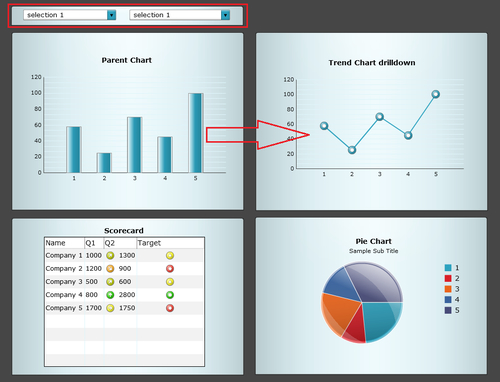It is very important when designing a dashboard to make it as easy to read as possible. In addition, we want to make a dashboard conform to how humans analyze a picture. A common concept is to move from the top left-hand side to the top right-hand side and then to the bottom. This is a flow that the majority of users are comfortable with.
Now we bring in the concept of quadrants. It allows us to create groupings so that a user is not so overwhelmed when looking at the dashboard. Creating proper quadrants is very important and this recipe will give an example of the proper use of quadrans.

Set up your charts in a way where it is like four quadrants.
Selectors should be on the top left-hand side, if they control the whole chart.
Use backgrounds to help separate your quadrants.
Parent charts should be on the left-hand side or on top of the drill-down chart
Charts that we want users to look...



